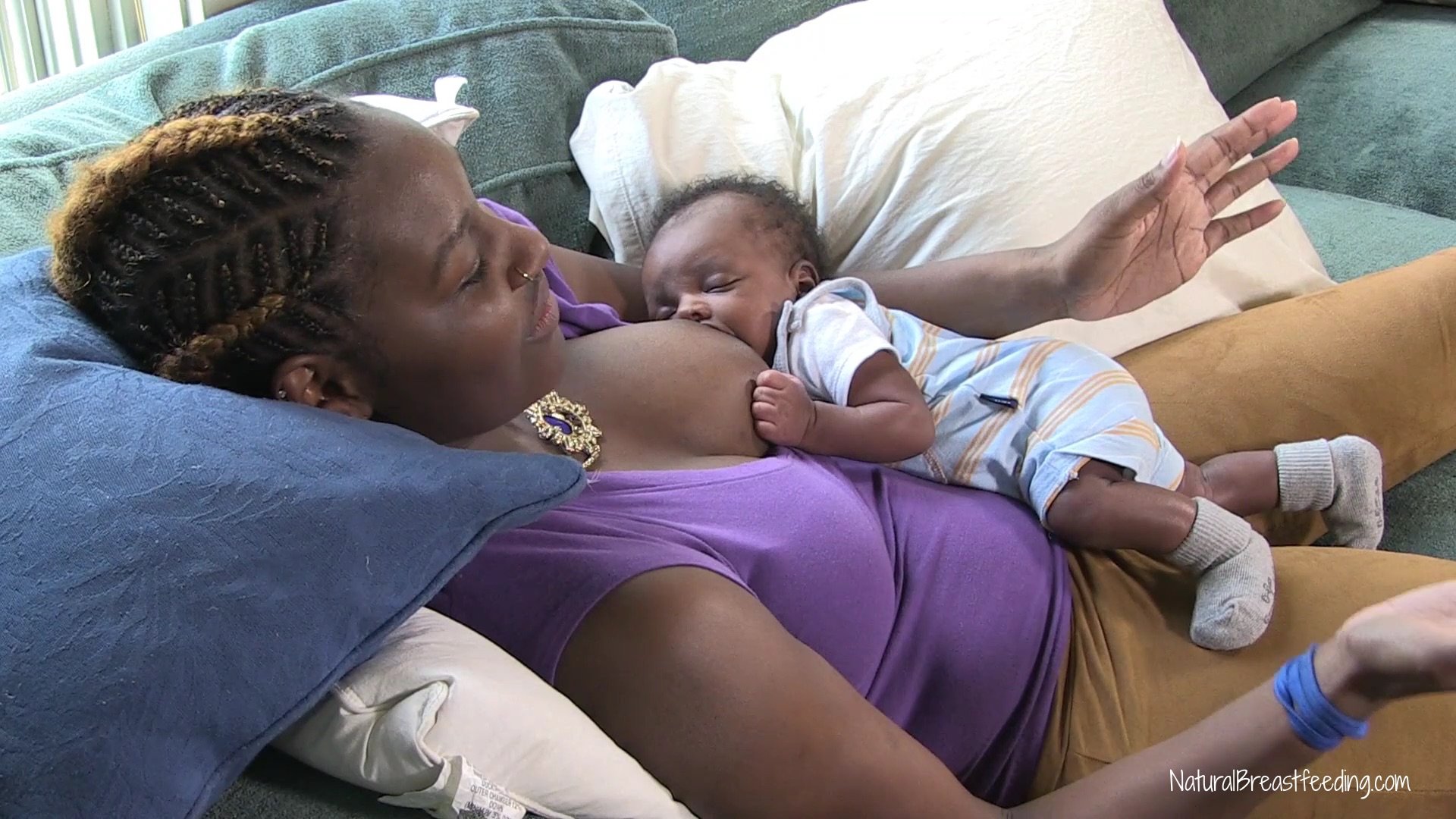Making Breastfeeding More Comfortable - for You and Your Baby
Breastfeeding Newborn Babies are Just Like Teenagers (and Toddlers!) in Their Desire for Independence
Guest blog by Ann Thierauf - RN
Laid back - biological nurturing positions can make breastfeeding easier for you and your baby.
Yes, it is strange to think of what we would consider as a helpless newborn baby being in any way independent. But they are more capable than we realize, and if we know how to recognize and foster their abilities rather than do everything for them, they will not only thrive, but it will make your life easier as a parent! As we explore this further, I’ll share three tips to help you begin a breastfeeding partnership with your newborn.
1) Breastfeed babies thrive in a safe, loving environment that allows them independence.
It's obvious that toddlers and teens want to do things for themselves, but did you know that if left unaided, a healthy newborn is, in fact, capable of making it to Mom's breast all by themselves and latching on successfully? They can do this within the first few hours of life if placed tummy down on their Mom’s abdomen and are allowed to use all their reflexes. It's called the breast crawl -- and it's fascinating to watch. Not only does the baby latch on better, but Mom is far less likely to get sore nipples.
2) Nursing a baby frequently can cause you physical pain – but this can be avoided by following a couple of tricks.
If your baby doesn't have a deep latch, it is so easy to develop sore, cracked nipples that can even bleed. Even though I am a nurse, this was a mistake I made with my firstborn.
When your baby has a superficial latch, they only nurse on your nipple. When that happens, your nipple is being compressed against your baby's hard palate (that’s the area behind the gums) instead of the more spacious soft palate (further back in the mouth). You can test this yourself by putting your tongue on the roof of your mouth, and you can feel the difference between the soft and hard palate in your mouth.
Not only is breastfeeding with a superficial latch more painful, but your baby doesn’t get as much milk. When a deep latch occurs, the areola (that’s the area around your nipple) containing the milk ducts is in your baby's mouth. When your baby massages this area with their lips, they can get more milk.
Have you ever heard of baby boxing (sometimes known as breast boxing)? This is when a baby thrashes and flails with their hands and feet, as they can feel like they are falling off the edge of a cliff. I have often seen this when a mom sits up to breastfeed. If this happens, lie back, and let your baby lie on top of you with their tummy down, using gravity to support them. This will help them feel secure and settled. If you are patient enough, your baby may even crawl towards your breast and latch on all by themselves, and when your baby helps, it’s less likely to hurt.
Breastfeeding is more likely to go smoothly if you know the problems that can happen beforehand. Likewise, when dealing with a toddler, it's good to know that they can kick you in the shins, so you can take steps to protect not just yourself but also them and ward off potential problems!
3) Taking time to learn and prepare is key to figuring out what works for you.
So often, I see women in the labor ward sitting up to breastfeed while gently cradling their newborn in their arms and expecting their baby to latch on easily, just like the way they may have seen an experienced few-week-old baby nurse at a restaurant. But that cradle position is hard for a newborn as their weak neck muscles, and large head makes them unable to hold their head back the way we humans do when we are swallowing.
This is why Mom's are often taught to hold their baby by the back of the neck in the cross-cradle or football position. It can be an awkward position for Mom to learn, especially since she needs to use her other hand to shape her breast like a sandwich and, at the same time, bring her baby forward onto her breast. If this is done incorrectly or the baby isn't that cooperative (like not opening their mouth wide enough) the latch will be poor, leading to nipple trauma and less milk for the baby. Often the baby will keep popping off the breast because they don't have a deep enough latch, and it can be so frustrating for everyone. But some women will say that it doesn't feel natural to let the baby take the lead in the beginning, and they feel more comfortable with the idea of sitting upright and nursing in a way that allows them to see their baby's face better. Regardless of what position you use when nursing, the latch should be deep and comfortable, and you need to be comfortable, too.
I would absolutely encourage you to learn how to breastfeed in the laid-back position, watch the videos, and do the recommended exercises beforehand, so you get accustomed to the idea of allowing gravity to hold your baby so they will feel more secure. It's also worth paying close attention to the module on what NOT to do when breastfeeding because these are mistakes I have seen many women make that lead to problems.
Sitting uptight to breastfeed can be stressful on your back, neck, arms, and bottom parts from simply holding your baby, making you wonder how on earth you are going to be able to do this 8-12 times a day. Laid back nursing is often not taught in hospitals or written about in parenting magazines. This is all based on newer research, and I am very grateful to GentleBirth founder Tracy Donegan for introducing me to this material.
Suzanne Colson developed this approach to breastfeeding - you can find her book and research online.
Did you know that 3rd trimester sleep can impact breastfeeding? (Another great reason for using your Sleep Sanctuary in the app at night).
This is becoming more mainstream as I am starting to see articles about laid-back nursing posted in La Leche League https://lllusa.org/lie-back-and-relax-a-look-at-laid-back-breastfeeding.
If you’d like to learn more, you can check out a fantastic web seminar that is included in your Masterclass https://www.naturalbreastfeeding.com and you can take a look at this article: http://www.nancymohrbacher.com/articles/2020/11/16/the-study-ive-waiting-for-is-finally-here
For more information contact Ann Thierauf
Ann is a Labor and Newborn Care Nurse and GentleBirth childbirth educator interested in empowering families with education and support before birth, so they are more confident and prepared for birth and can enjoy life more when their baby arrives.



